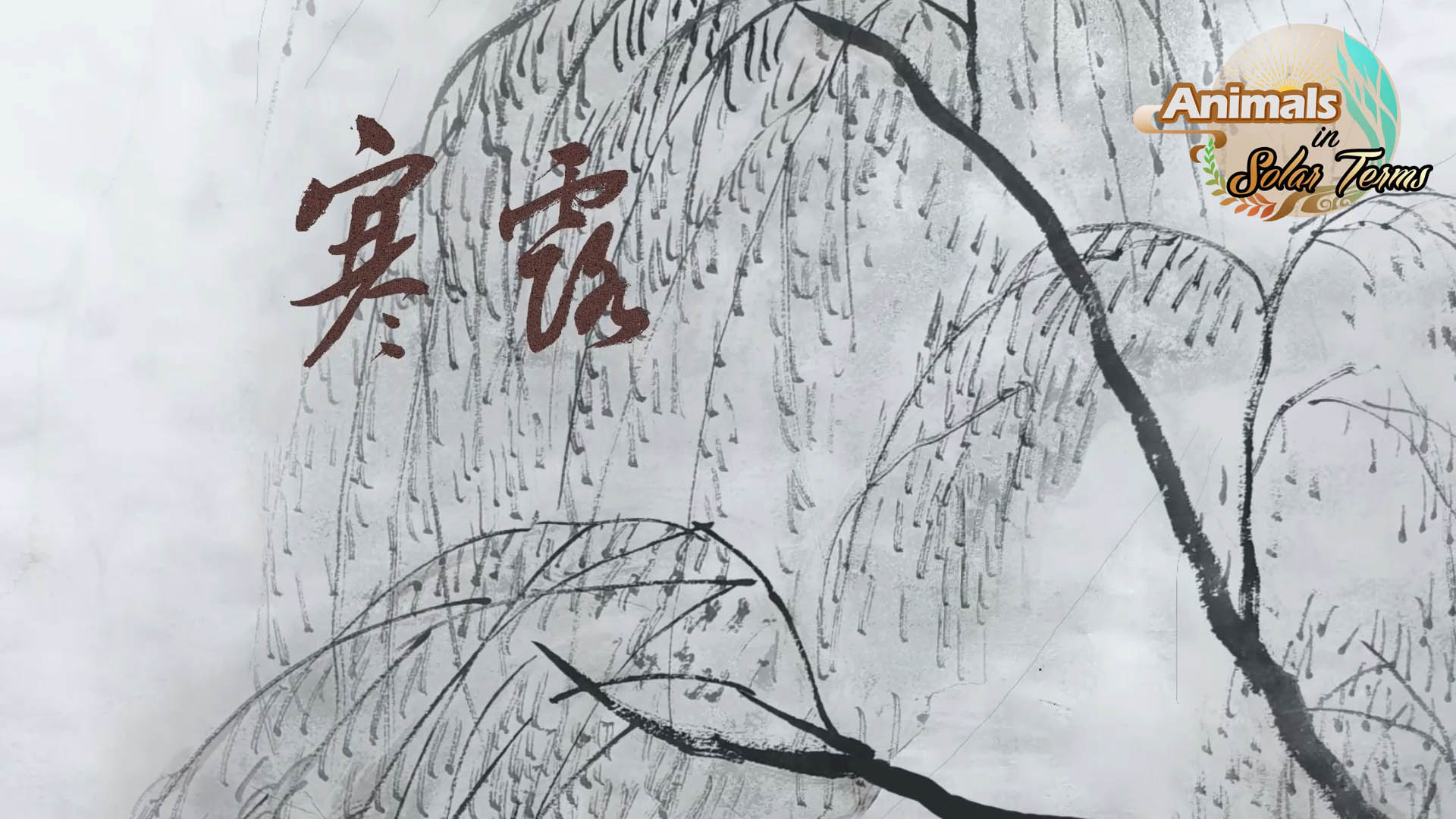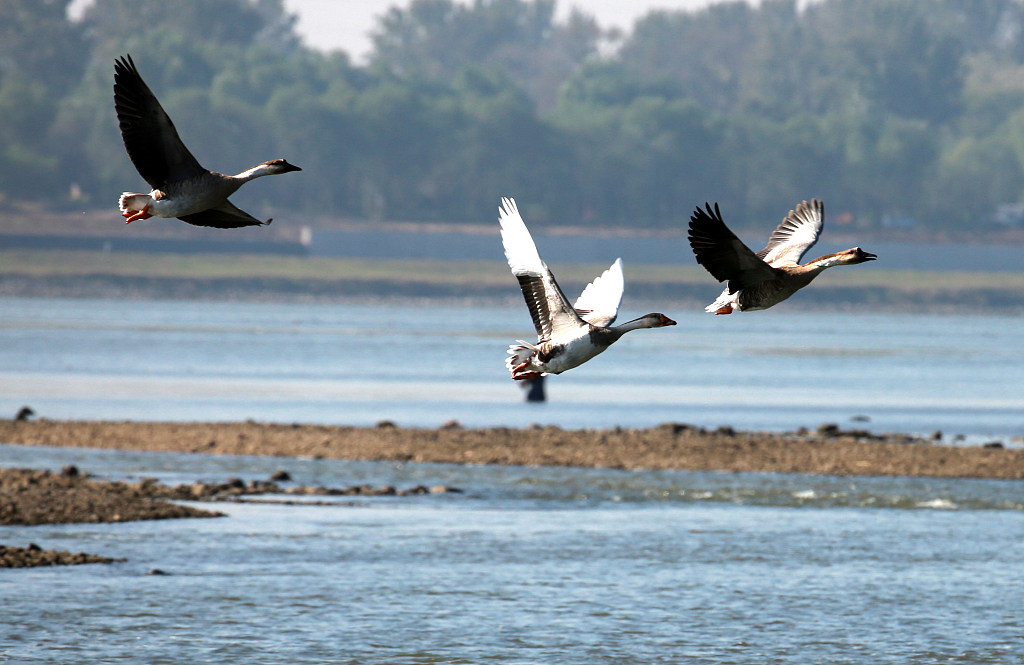01:35

With a sharp drop of the temperature in China, the last solar term of the autumn—Hanlu, or the Cold Dew, falls on Saturday, marking the arrival of late autumn.
Hanlu gets the name from the dew which is about to become frost as the weather begins to get chilly. This solar term is the 17th of the 24 solar terms. During Hanlu, the temperature across the East Asia significantly drops. Divided by the Qinling–Huaihe Line, northern China could soon see frost or even ice and snow, while southern China will enjoy a cooler and drier weather during the period.

The representative animals of Hanlu are swan geese and clams. In the three pentads which summarize the phenology in each solar term, swan geese line up and fly south for winter, and during Hanlu they can frequently be seen in the sky.
The ancient Chinese believed that the sparrows were incarnated in the water as clams. While the truth is that Hanlu is the breeding season for clams, so clams appear in large groups by the shores. As for sparrows, they either hide in bushes or squeeze into tree holes to avoid the cold, and predators, making it hard to spot them during the period. When the ancient people noticed that the clams' shells were similar to the patterns of feathers of birds like sparrows, they thought clams were reincarnated from sparrows and that became folklore, passing down for hundreds of years.
For more:
Animals in solar terms: Guyu
Animals in solar terms: Xiaoman
Animals in solar terms: Mangzhong
Animals in solar terms: Xiaoshu
Animals in solar terms: Liqiu
Animals in solar terms: Chushu
Animals in solar terms: Bailu
Animals in solar terms: Qiufen
(Video provided by Zhongshan Broadcasting & Television Station. Artwork and Inscription by Guanying Mai, member of Guangdong Artists Association)
(If you want to contribute and have specific expertise, please contact us at nature@cgtn.com.)